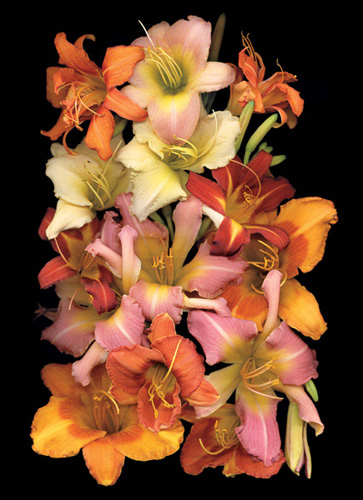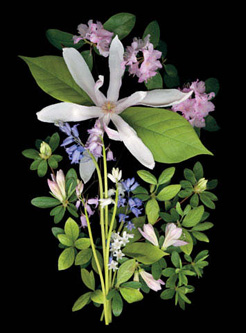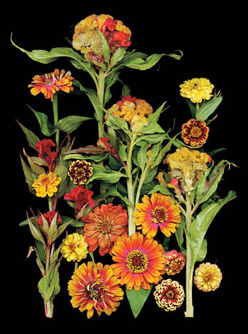
Daylilies often bloom in shades and tints that range from warm pink and pale yellow to orange, melon, and rust.

Color harmonies are combinations based on hues and their position on the color wheel. The monochromatic scheme incorporated variations of one color. The analogous harmony allows one color to dominate, and brings adjacent colors immediately to the left and right along with light pastels, dark shades, and tones. While the monochromatic planting is calm and soothing, the analogous one is similarly serene, but richer, deeper, and more compelling.
If you were to pick orange, for example, then yellow-orange and red-orange would go into the mix. Pastels and shades of the secondary and tertiary colors elaborate on the theme, so salmon, pumpkin, and rust might be added along with peach, fawn, and amber all the way to sienna and vermillion. This kind of scheme is naturally successful. The colors inevitably go together.
Many daylily varieties come in versions of a cantaloupe color. These plants could simply be massed together with success. But vivid shades could be placed close to the main viewing point, and paler, softer ones drifting into the background—like the hazy tones of distant mountains. The trompe l’oeil or “fool-the-eye” effect makes the space seem deeper than it actually is.
Analogous colors are often seen in nature. The various shades of bark are analogous, as are autumn’s leaves. Remember, nature is not based on the color wheel; the color wheel is based on nature. Plantings can incorporate the colors of decorative tree bark from amber paperback maple (Acer griseum) or river birch (Betula nigra). The changing colors of foliage in fall also contribute opportunities with maples, for example, or sweet gum (Liquidambar sp.) with yellow, red, and purple leaves at the same time.
Pink azalea flowers (evergreen Rhododendron varieties) swarm around a late star magnolia flower (Magnolia stellata variety), and stems with lavender pink, white, and blue Spanish bluebells, Endymion hispanicus.

Yellow to red late summer annuals including cock’s comb Celosia ‘Chief’ (top); and zinnias like large dark orange ‘Benary’s Giant’ series, large yellow-tipped ‘Zowie’, and small pompom ‘Persian Carpet’.
